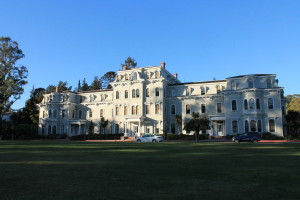
Just weeks into the term of the 45th president, political resistance has made itself known across the country.
The new administration has shown little hesitation in implementing a number of the policies discussed during the campaign, largely through the use of executive orders, such as a wall on the U.S.-Mexico border and reduction of environmental review for infrastructure projects. The president also signed an order restricting travel from 7 primarily Muslim countries, presently suspended by the judiciary. Though the number of executive orders the president has signed so far is typical for his time in office, he has, however, set the record for the number of lawsuits filed against a president or administration in our country’s history (55 in the first two weeks, compared to President Obama’s total of five).
In the Bay Area, a region known nationally as the home of various social movements in the late 20th century and its leftist political tradition, rejection of right-wing extremism has appeared in many forms, as formal as the Ninth Circuit Court of Appeals’ halt of an executive order banning travel from primarily Muslim countries, as empowering as the Women’s March (in which several Bay Area cities participated the day after the inauguration), or as direct as protesters shattering windows of the student union at U.C. Berkeley, when Milo Yiannopoulous, known for his racist internet presence, was scheduled to speak.
At the local governmental level, resistance can be seen in the various sanctuary cities and campuses that will not comply with the federal immigration officials as they target undocumented immigrants.
The mayors of Oakland, San Jose and San Francisco affirmed their commitment to protecting their communities from the threat of deportation, after the president signed an order that would remove immigrants “who have committed acts that constitute a chargeable criminal offense” and cut federal funding to sanctuary jurisdictions. The order expressed the new administration’s view that these cities “have caused immeasurable harm to the American people and to the very fabric of our Republic.” San Francisco became the first city to sue the president for this order, citing its violation of the 10th amendment right to local sovereignty.
Large crowds gathered at the San Francisco Airport and Lake Merritt as well, following the travel ban on Muslim countries and joining other demonstrations across the country.
But despite its reputation, the Bay Area is not a leftist utopia free of political controversy. The region has high levels of economic inequality, gentrification and homelessness, social issues that have been at the forefront of discussion in recent years. How exactly the actions of the federal government will influence the politics within the Bay Area is difficult to say. The opposition to the new president might distract from these issues, or it might encourage an even more progressive agenda.
It also depends on how involved people become in local politics as a means of resisting Donald Trump’s presidency. For now, and likely the next four years, to live in America is to try to reconcile a government in conflict with itself and with the majority of the electorate. At the rate it’s going now, the nation-wide dissent may tire itself out. But hopefully we are just warming up.
This is the first installment of a Bay Area political column by Caroline Berg. Stay tuned with The Campanil for more.




